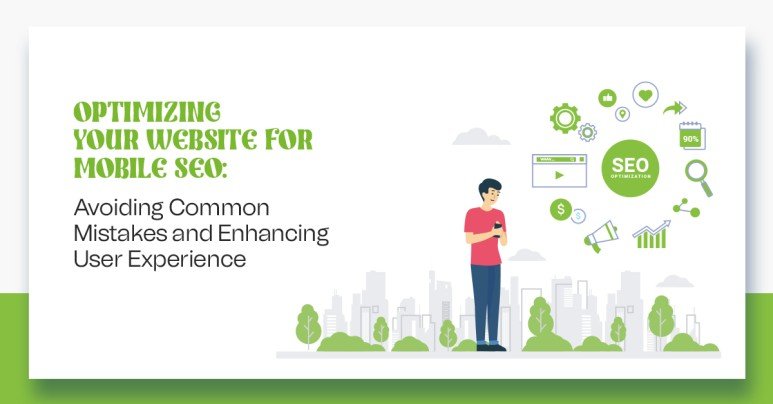In an increasingly mobile-first world, optimizing your website for mobile SEO is no longer a suggestion, it's a necessity. With over 50% of all internet searches now happening on mobile devices, neglecting mobile optimization can significantly impact your website's visibility, user engagement, and ultimately, your bottom line.
Here, we'll explore some common mistakes to avoid and best practices to implement while optimizing your website for mobile SEO and enhancing user experience.
Common Mistakes to Avoid:
• Ignoring Responsive Design: A responsive design ensures your website adapts seamlessly to different screen sizes and resolutions, providing a smooth browsing experience across all devices. Neglecting this fundamental aspect can lead to frustrated users and lost conversions.
• Overlooking Page Speed: Slow page loading times are a major turn-off for mobile users. Optimize your website's images, code, and caching to ensure lightning-fast loading speeds.
• Neglecting Mobile-Friendly Content: Users expect content that is easily digestible on their mobile devices. Opt for concise and scan able content, break up long paragraphs with images and videos, and use clear and large fonts for easy reading.
• Ignoring Local Search Optimization: If your website caters to local audiences, ensure your mobile SEO includes local citations, accurate NAP (Name, Address, Phone) information, and Google My Business optimization.
• Forgetting Mobile-Specific Analytics: Tracking your website's performance on mobile devices is crucial for identifying areas for improvement. Utilize analytics tools like Google Search Console and Google Analytics to understand how users interact with your website on their mobile devices.
Best Practices for Mobile SEO and User Experience:
• Embrace a Mobile-First Approach: Design your website with mobile users in mind first, making sure it is intuitive, easy to navigate, and visually appealing on smaller screens.
• Optimize Images: Images can significantly impact page speed. Compress images without compromising quality and use responsive image formats to ensure optimal viewing on different devices.
• Leverage AMP (Accelerated Mobile Pages): AMP is a framework that creates lightweight versions of your web pages, resulting in significantly faster loading times on mobile devices.
• Focus on Voice Search: With the rise of voice assistants, optimize your content for voice search by using natural language and long-tail keywords.
• Make Forms Mobile-Friendly: Forms should be easily accessible and user-friendly on mobile devices. Implement large touch-friendly buttons, simplify form fields, and avoid unnecessary steps.
Enhancing User Experience:
• Prioritize Readability: Use clear and concise language, break up text with subheadings and bullet points, and ensure sufficient font size and contrast for easy reading.
• Optimize Touch Interactions: Ensure all buttons, links, and other interactive elements are large enough and spaced appropriately for easy tap and swipe gestures.
• Minimize Pop-Ups and Interstitials: Intrusive pop-ups and interstitials can disrupt the user experience and lead to frustration. Minimize their use and ensure they are implemented with mobile usability in mind.
• Offer Offline Access: Consider implementing offline functionality for specific content sections, allowing users to access critical information even without an internet connection.
• Test and Iterate: Regularly test your website's mobile performance and user experience on different devices and browsers. Use user feedback to identify areas for improvement and implement necessary changes.
Conclusion:
By implementing these best practices and avoiding common mistakes, you can ensure your website delivers a seamless and engaging experience for mobile users, ultimately boosting your search engine rankings, traffic, and conversions. Remember, mobile optimization is not a one-time effort, but an ongoing process requiring continuous monitoring, evaluation, and improvement.





